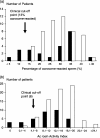Sperm function and assisted reproduction technology
- PMID: 29699207
- PMCID: PMC5907131
- DOI: 10.1111/j.1447-0578.2005.00087.x
Sperm function and assisted reproduction technology
Abstract
The evaluation of different functional sperm parameters has become a tool in andrological diagnosis. These assays determine the sperm's capability to fertilize an oocyte. It also appears that sperm functions and semen parameters are interrelated and interdependent. Therefore, the question arose whether a given laboratory test or a battery of tests can predict the outcome in in vitro fertilization (IVF). One-hundred and sixty-one patients who underwent an IVF treatment were selected from a database of 4178 patients who had been examined for male infertility 3 months before or after IVF. Sperm concentration, motility, acrosin activity, acrosome reaction, sperm morphology, maternal age, number of transferred embryos, embryo score, fertilization rate and pregnancy rate were determined. In addition, logistic regression models to describe fertilization rate and pregnancy were developed. All the parameters in the models were dichotomized and intra- and interindividual variability of the parameters were assessed. Although the sperm parameters showed good correlations with IVF when correlated separately, the only essential parameter in the multivariate model was morphology. The enormous intra- and interindividual variability of the values was striking. In conclusion, our data indicate that the andrological status at the end of the respective treatment does not necessarily represent the status at the time of IVF. Despite a relatively low correlation coefficient in the logistic regression model, it appears that among the parameters tested, the most reliable parameter to predict fertilization is normal sperm morphology. (Reprod Med Biol 2005; 4: 7-30).
Keywords: assisted reproduction; high intra‐ and interindividual variability; multivariate approach; prediction of outcome of IVF; sperm functions.
Figures



References
-
- Jochum M, Pabst W, Schill WB. Granulocyte elastase as a sensitive diagnostic parameter of silent male genital tract inflammation. Andrologia 1986; 18: 413–419. - PubMed
-
- Viljoen MH, Bornman MS, Van Der Merve MP, Du Plessis DJ. Alpha‐glucosidase activity and sperm motility. Andrologia 1990; 22: 205–208. - PubMed
-
- World Health Organization. WHO laboratory manual for the examination of human semen and sperm–cervical mucus interaction, 4th edn Cambridge: Cambridge University Press, 1999.
-
- Zorn B, Sesek‐Briski A, Osredkar J, Meden‐Vrtovec H. Semen polymorphonuclear neutrophil leukocyte elastase as a diagnostic and prognostic marker of genital tract inflammation − A review. Clin Chem Laboratory Med 2003; 41: 2–12. - PubMed
-
- Mortimer D. Sperm transport in the human female reproductive tract In: Finn CA, ed. Oxford Reviews of Reproductive Biology. Vol. 5 Oxford: Oxford University Press, 1989;. 30.
Publication types
LinkOut - more resources
Full Text Sources
